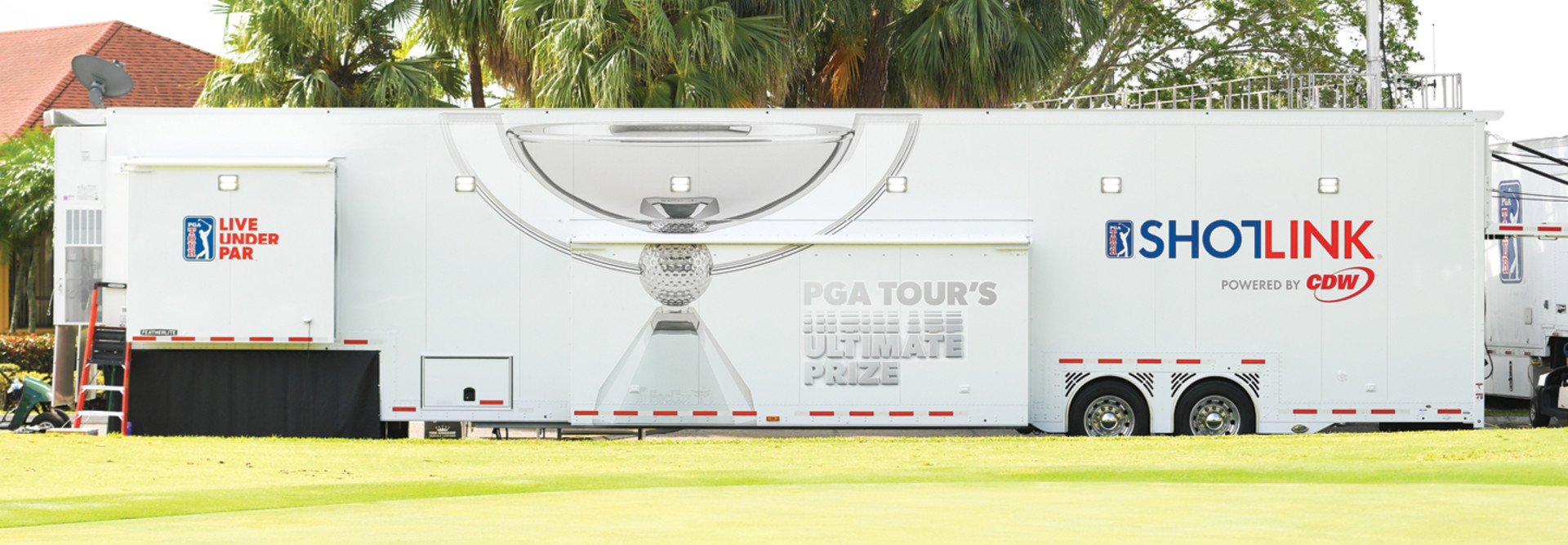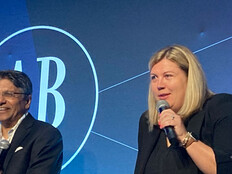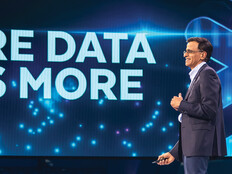ShotLink Plus Delivers Enhanced Fan Experience
Two years ago, the PGA TOUR modernized its ShotLink technology to give fans and players even more advanced statistics and predictive metrics in the future. The PGA TOUR still relies on volunteers with tablets and lasers to manually pinpoint the ball position after every player’s shot from the tees to the fairways. But on each putting green, the organization has replaced lasers with three video cameras pointed at the hole.
The camera system, called ShotLink Plus, allows ShotLink for the first time to track ball movement on the greens and provide a three-dimensional view of the ball path.
That will allow the PGA TOUR to develop new statistics, such as the success rates of putts going from left to right versus right to left, says Don Wallace, the PGA TOUR’s director of operations. It will also help fans gain a better understanding of the game and players’ strategies.
INFOGRAPHIC: See how the PGA TOUR uses data analytics to power the fan experience.
For example, if a golfer hits a chip shot and the ball lands 8 feet beyond the hole, then bounces back and rests within 2 feet of the hole, ShotLink Plus’ ball-in-motion data allows TV broadcasters to break down the physics and the spin rate that allowed that to happen, he says.
“We’ve always captured the ball at rest. Now we can capture the ball in motion,” Wallace says. “We still end up with the same endpoint, but now we know how the ball got there.”
New Data Center Boosts the PGA TOUR’s Compute Power
The PGA TOUR, however, needed more compute power and storage and more bandwidth to process all the video content. So, the IT staff upgraded its data center with Dell EMC VxRail hyperconverged infrastructure appliances and built faster networks to boost performance and reliability — and ensure that ShotLink data gets delivered almost instantaneously to TV broadcasters, onsite LED scoreboards, websites and mobile apps.
That’s important because the PGA TOUR is investing in new mobile apps and digital experiences to improve fan engagement, including gaming opportunities. ShotLink data is critical to that strategy.
“If you bet on a player to do well, you are pretty engaged,” says Ken Lovell, PGA TOUR’s senior vice president of ShotLink business operations. “We are pushing hard on reducing latency and making sure the data is available as fast as possible so fans can see what’s happening in real time.”
ShotLink Data Moves Fast Through Fiber Network
The ShotLink Plus camera system uses a tremendous amount of bandwidth. Each camera streams high-definition video at 450 megabits per second. On an 18-hole course with 54 cameras, that’s 24 gigabits per second of video being transmitted at any given time, says Alex Turnbull, PGA TOUR’s director of broadcasting production.
Two years ago, the TOUR started using a fiber-optic network to handle the bandwidth. Before a tournament, TOUR employees spend three days laying fiber across a golf course, Gredenhag says. They place it on top of the grass along the ropes that fans stand behind.
LEARN: How the sports industry is partnering with tech to gain a competitive edge.
The TOUR also builds a private Wi-Fi network using Cisco Meraki access points. The Wi-Fi, which connects to the fiber network, allows volunteers with tablets to record players’ shots on the fairway as well as on the greens as a backup in case the cameras fail, Gredenhag says. The staff typically installs three access points per hole.
“Everything is about physics and making sure we have a good signal throughout the course,” Lovell says.
When the volunteers, lasers and video cameras capture players’ shot information, the data is fed to an onsite data center within milliseconds via the fiber network, Wallace says.The TOUR replaced its legacy server infrastructure in 2019 with two seven-node Dell EMC VxRail HCI clusters housed inside onsite ShotLink trucks, where TOUR staffers manage the entire operation. Each cluster runs 35 virtual servers and houses 300 terabytes of storage.











